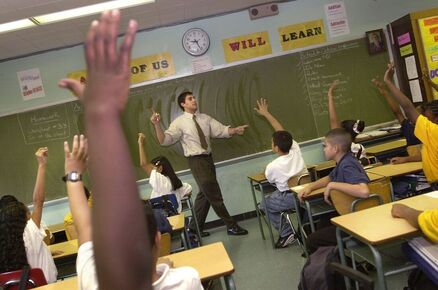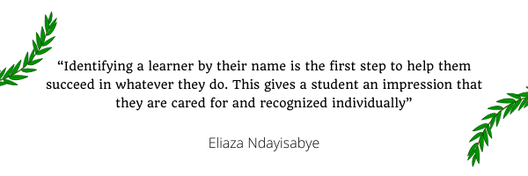Category: Teaching
A New Year is on the way and the possibilities are endless. No teacher is perfect and all teachers have some bad habits. Being a good teacher means reflecting on these and trying to reduce them as much as possible.
Here are some bad habits that cause us to be less effective teachers:
Here are some bad habits that cause us to be less effective teachers:
1. Not willing to learn or change.
Teachers who think they have learned all they need to know, are definitely building a bad habit. The world around us is continually changing, and the teacher’s lesson plans should continue to evolve as well. Teachers should seek ways to integrate technology into their classrooms and try new teaching methods.
Teachers who think they have learned all they need to know, are definitely building a bad habit. The world around us is continually changing, and the teacher’s lesson plans should continue to evolve as well. Teachers should seek ways to integrate technology into their classrooms and try new teaching methods.
Ways to use technology in the classroom
- Use a digital whiteboard.
- Use spreadsheets to keep track of students' grades.
- Show videos.
- Add visual effects, photos, videos and music to presentations.
- Manage emails and other electronic messages.
- Have a cloud storage such as Google Drive.
- Create a Facebook group specifically for the class.
- Create, host and play games with Kahoot.
- Play podcasts.
- Take digital field trips with Google Earth.
- Use learning apps in the classroom.
- Take formal assessments online.
- Use the flipped classroom model.
- Create your own worksheets.
- Study, review and critique content in websites.
- Build classroom communities with parents and students using ClassDojo.
- Design and maintain a Blog.
- Use a classroom calendar with Google Calendar.
- Develop a class website using a cloud-based web development platform such as Wix or Weebly.
- Use twitter hashtags to take questions.
- Use online mind maps for class brainstorms like MindMeister.
- Gather student feedback with applications such as Socrative, Google forms or SurveyMonkey.
2. Not admitting mistakes.
It’s OK to make mistakes as a teacher. Everyone does. But once one has been realized, not admitting to it, is no good. Be realistic and admit that we are not a walking dictionary or an infinite database. If you don’t know, just say so, and reassure the student that you will find out.
It’s OK to make mistakes as a teacher. Everyone does. But once one has been realized, not admitting to it, is no good. Be realistic and admit that we are not a walking dictionary or an infinite database. If you don’t know, just say so, and reassure the student that you will find out.
Walking dictionary
3. Yelling at the students.
Yelling rarely produces any good results and almost always results in loss of respect. It eventually will train your students to ignore your regular voice. So yelling begets more yelling, and you have to keep upping the volume and intensity to get their attention. The more time you spend on discipline, the less time you have to teach.
Check out these tips that really work instead:
- Make a call-and-response or clap-back.
- Teach students to respond to hand signals.
- Turn off the lights.
- Count down to quiet and establish consequences.
- Get quieter, not louder.
- Prevent the yells before they start (identify triggers).
4. Assuming low expectations.
Unfortunately, some teachers get into a bad habit of expecting too little from their students. A student’s race, social class, academic history, disability, socioeconomic status, or their language should not define their potential to succeed in the classroom. Teachers should have high expectations for all of their students. The higher the expectation the teacher has, the more likely they will teach in a way that challenges and motivate students to do better.
Unfortunately, some teachers get into a bad habit of expecting too little from their students. A student’s race, social class, academic history, disability, socioeconomic status, or their language should not define their potential to succeed in the classroom. Teachers should have high expectations for all of their students. The higher the expectation the teacher has, the more likely they will teach in a way that challenges and motivate students to do better.
5. Teaching without passion and empathy.
Teachers don't have to come to school every day with a huge smile on their face. But they should at least act like they want to be there. There is nothing worst then having a teacher in the classroom who doesn't want to be there. Understanding students is very important to teach. In order to plan how to teach your students in an interesting manner, a teacher needs to know what motivates the students, what background the students are bringing to the classroom, as well as the students’ interests.
Try as hard as you can to find a way to relate the subject to their daily lives. It will make it much more likely for them to be invested in what you are explaining. Sometimes, some subjects are just not fun, but you can try to create some kind of competition, or game, that can help them to learn, or maybe even use songs or videos.
Teachers don't have to come to school every day with a huge smile on their face. But they should at least act like they want to be there. There is nothing worst then having a teacher in the classroom who doesn't want to be there. Understanding students is very important to teach. In order to plan how to teach your students in an interesting manner, a teacher needs to know what motivates the students, what background the students are bringing to the classroom, as well as the students’ interests.
Try as hard as you can to find a way to relate the subject to their daily lives. It will make it much more likely for them to be invested in what you are explaining. Sometimes, some subjects are just not fun, but you can try to create some kind of competition, or game, that can help them to learn, or maybe even use songs or videos.
6. Failing to diversify your teaching.
Variety is the spice of the classroom. Teachers can easily improve student comprehension by varying their classroom instruction. Students will better grasp the concepts being taught if they can see it applied in different ways.
Variety is the spice of the classroom. Teachers can easily improve student comprehension by varying their classroom instruction. Students will better grasp the concepts being taught if they can see it applied in different ways.
7. Assessing infrequently.
Infrequent assessment reduces retention and places immense pressure on students and teachers alike to cover a huge amount of content between testing rounds. Try a 10-question quiz every Friday to gather weekly feedback on your own effectiveness as a teacher.
Infrequent assessment reduces retention and places immense pressure on students and teachers alike to cover a huge amount of content between testing rounds. Try a 10-question quiz every Friday to gather weekly feedback on your own effectiveness as a teacher.
8. Immediately calling on volunteers to answer a question.
When you immediately ask for volunteers to answer a question, few students will even bother to think about the question, since they know that eventually, someone else will provide the answer. Giving students several seconds to think after asking a question improves their learning.
When you immediately ask for volunteers to answer a question, few students will even bother to think about the question, since they know that eventually, someone else will provide the answer. Giving students several seconds to think after asking a question improves their learning.
9. Not getting to know your students.
Getting to know students too often comes second. Building a relationship with our students takes time. It’s more important than the content. Because you’re not just teaching content. You’re teaching teenagers.
Getting to know students too often comes second. Building a relationship with our students takes time. It’s more important than the content. Because you’re not just teaching content. You’re teaching teenagers.
10. Being inconsistent.
It’s tough to be consistent. But being inconsistent in our classroom management leads to a multitude of problems. The first step into implementing any kind of management tool into your classroom is to be consistent. Consistency is the key, especially for those students who do not have it at home.
Being a consistent teacher means everything that you do in your classroom, such as how you organize your space, your time, your students’ learning materials, and everything else that surrounds learning, has to be in a consistent learning environment. A well-structured consistent classroom management plan is the key to having a successful classroom.
It’s tough to be consistent. But being inconsistent in our classroom management leads to a multitude of problems. The first step into implementing any kind of management tool into your classroom is to be consistent. Consistency is the key, especially for those students who do not have it at home.
Being a consistent teacher means everything that you do in your classroom, such as how you organize your space, your time, your students’ learning materials, and everything else that surrounds learning, has to be in a consistent learning environment. A well-structured consistent classroom management plan is the key to having a successful classroom.
Do you have any bad habits that you would like to share? Please share your ideas in the comment section below, I would love to hear your comments.










